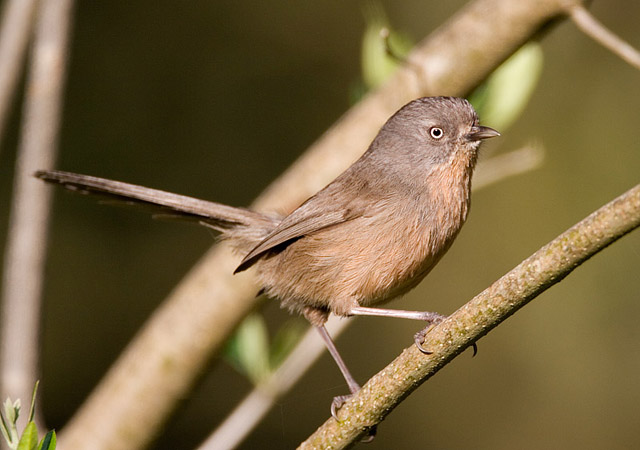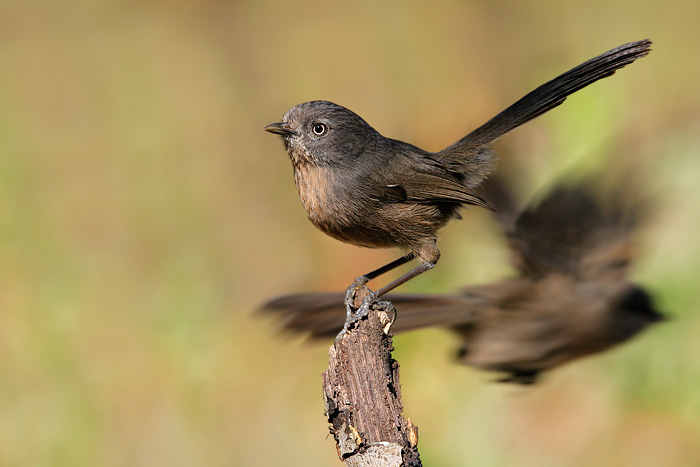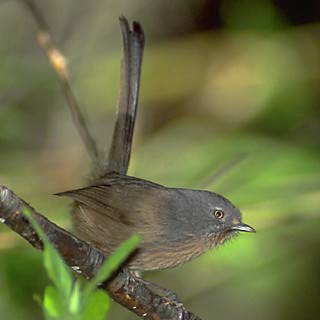
Chamaea fasciata
SUBFAMILY
Timaliinae
TAXONOMY
Parus fasciatus Gambel, 1845, Monterey, California. Six subspecies.
While Delacour long ago considered this species a
babbler, many authorities have persisted in assigning it its own
family or
SUBFAMILY
. However, the DNA hybridization research
of Sibley and Ahlquist suggests the wrentit is the only New
World babbler, whose ancestors crossed the Bering land bridge
in the mid-Miocene (15–20 million years ago). Sibley and
Ahlquist do place it in its own tribe, Chamaeini.
OTHER COMMON NAMES
French: Cama brune; German: Chaparraltimalie.
PHYSICAL CHARACTERISTICS
6.3 in (16 cm); 0.5 oz (14 g). Gray (southern) or brown (northern)
compact bird with long tail (usually held up), pale eyes,
and small, sharp bill. Song is a very distinctive accelerating series
of high notes.
DISTRIBUTION
Pacific Coast of North America, from northern Oregon to
northern Baja California.
HABITAT
Chaparral and coniferous scrub.
BEHAVIOR
Generally live in pairs, communicating continuously with
unique calls. Frequents heavy low vegetation.
FEEDING ECOLOGY AND DIET
Forages for insects and berries in undergrowth.
REPRODUCTIVE BIOLOGY
Monogamous, paired for life. Sexes share in all aspects of nesting
and chick rearing. Nest is located deep in bushes, a tightly
woven cup of twigs, bark, and feathers, lined with spider webs.
Three to five greenish blue, unpatterned eggs compose clutch.
CONSERVATION STATUS
Not threatened, though significant portions of range have been
developed.
SIGNIFICANCE TO HUMANS
Popular with birdwatchers.
Photo Gallery of - Wrentit




 Animalia Life
Animalia Life